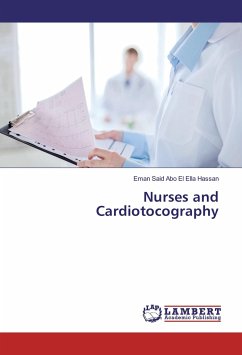Cardiotocography (CTG) has become a generally accepted method for the fetal surveillance during pregnancy and labor. Its purpose is to monitor fetal well-being and allow early detection of fetal distress. Also, CTG is used in the presence of health concerns for the mother during late pregnancy; this can include bleeding, high blood pressure, premature labor, Diabetes, Cholestasis, kidney or Heart disease. If there are health concerns for the fetus can repetitively suffer by oxygen insufficiency and as a consequence the metabolic acidosis can be developed. Severe hypoxic injury can leads to neurodevelopment disability and cerebral palsy or even death. CTG can be used to diagnose the hypoxia and prevent these adverse outcomes The nurses play a significance role in fetal monitoring, detection and early intervention for fetal distress.
Hinweis: Dieser Artikel kann nur an eine deutsche Lieferadresse ausgeliefert werden.
Hinweis: Dieser Artikel kann nur an eine deutsche Lieferadresse ausgeliefert werden.








